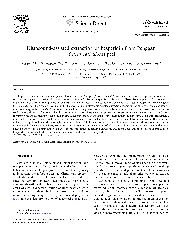摘要
Hesperidin, an abundant and inexpensive bioflavonoid in Penggan (Citrus reticulate) peel, has been reported to possess a wide range of pharmacological properties. Ultrasonic extraction is an effective technique for the isolation of bioactive compounds from vegetable materials. In this study, the application of ultrasonic method was shown to be more efficient in extracting hesperidin from Penggan (C. reticulate) peel than the classical method. The effects of main ultrasonic-assisted extraction conditions on extraction yields of hesperidin from Penggan (C. reticulata) peel were evaluated, including extraction solvents, solvent volume, temperature, extraction time, ultrasonic power, ultrasonic frequency. Results showed that solvent, frequency and processing temperature were the most important factors for improving the extracting yields of hesperidin. When performed at the same temperature under the same time using three frequencies, methanol as the solvent improved the extraction yield evidently compared with ethanol or isopropanol; by comparison of the frequency influence, the yield of hesperidin was higher at 60 kHz than at 20 kHz and 100 kHz. The optimum ultrasonic conditions were determined as: methanol, frequency of 60 kHz, extraction time of 60 min, and temperature of 40 degrees C. In addition, the ultrasonic power had a weak effect on the yields of hesperidin within the experimental range. Extending ultrasonic treatment times did not result in degradation of hesperidin; the rotary beaker for materials can increase the yields of hesperidin.
- 出版日期2008-3
- 单位浙江大学
